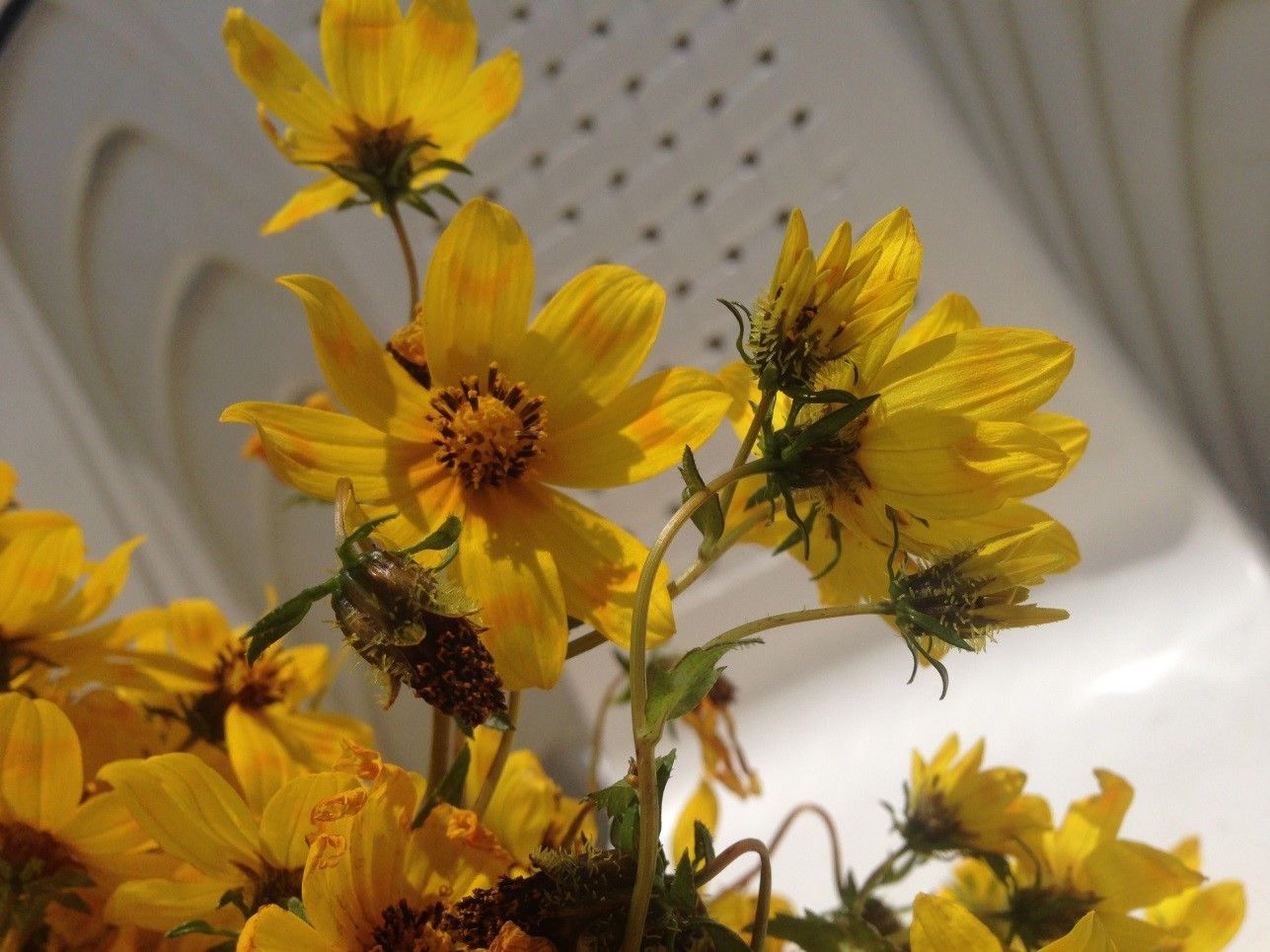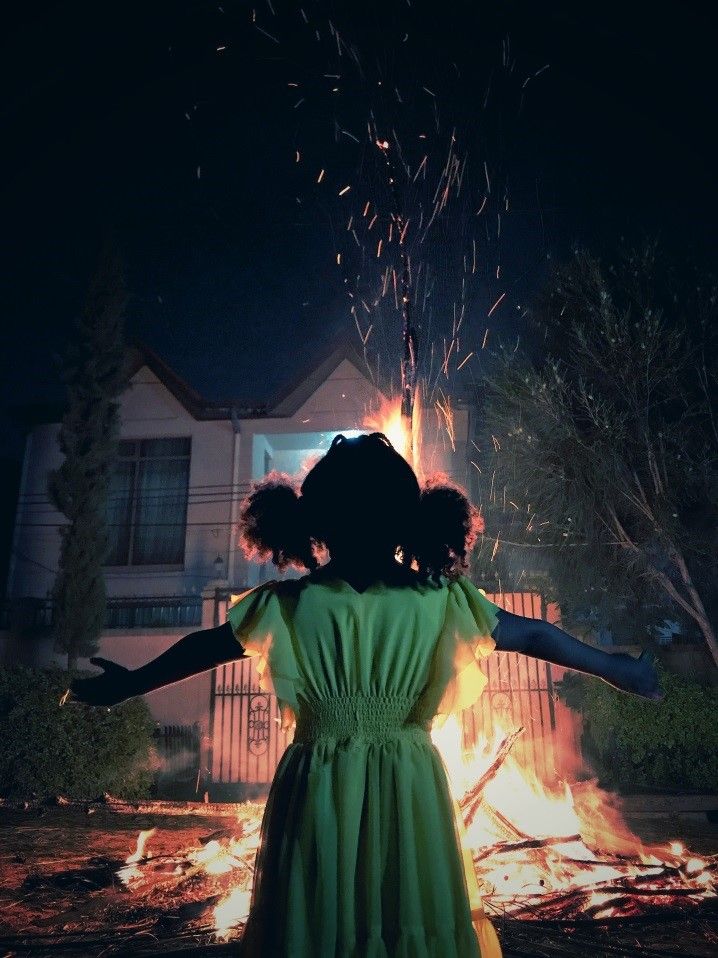On Sunday, September 11th, Ethiopians marked the first day of the Ethiopian New Year, as the East African country welcomed the year 2015 with hope for national harmony and peaceful coexistence.
Ethiopia is one of ten countries that have their own calendar. The Ethiopian calendar is ancient and distinct. It is known that the Ethiopian calendar is 8 years behind the Gregorian calendar. This new year was 2015 for us Ethiopians, celebrated on September 11th of each year, or the 1st of Mèskèrèm.
Ethiopia has 13 months and the first month is Mèskèrèm or September. It comes after the 13th month of Pwagumé which lasts from 5-6 days and rarely 7 days (every 700 years). Every time when the New Year is approaching (at the end of the month Pwagumé), this indigenous bright yellow flower known as Adèy Abèba and scientifically as Bidens macroptera effortlessly blooms all over Ethiopian lands, creating a sea of bright yellow delight.

Adèy Flower. Source: Kalkidan Zelalem
It marks the end of the rainy season and the beginning of the sunny spell, breath of fresh air, an atmosphere of renewed hope, and a new beginning.
Welcoming the New Year
It is 7 o’clock in the morning, and the streets are already busy. Chicken merchants are all over the place, cock-a-doodle-dos echoing from one chicken stall to another giving the holiday vibes. Restaurants are opened and cleaned, holiday songs are on blast, customers and business people are negotiating a price, others eating fried dough with those small tea cups, and women are sitting behind the grasses they aesthetically organized for the holiday sale.
As you look vacantly, your eyes will land on small snacks of popcorn being packed in plastics, and joyful residents firmly holding the chicken they bought upside down. This is a typical scene as the holiday season is approaching.
Many famous yet timeless holiday songs are part of the ceremonial moment. Some of those songs include Enkutatashi by Zèritu Gétahun, Enknwan adèrèsachu by Hamèlmal abatè, and Tilahun Gèssèssè’s Enkutatash to name a few.
When the holiday approaches, everyone in the family does their own thing: parents buy new clothes and shoes for their children, and young boys create vibrant paintings to mark the beginning of the New Year as well as hope inherent in new beginnings. Young girls dress up in traditional attire and carry a traditional drum made from cow skin together with freshly plucked bright yellow flowers. They go door to door singing the New Year song called ‘Abèbayèhosh’ to the adornment of community members. The boys are typically given money in exchange for their paintings and the girls are given traditional bread, but both are blessed by the elder of the house.
The New Year is also known as ‘Enkutatash’. As the legend goes, the Ethiopian new Year known as Enkutatash or Enku-letatash translated as the ‘gift of jewels’ dates back to the story of the Queen of Sheba. When Queen Sheba returned from her visit to King Solomon in 980 BC. She was welcomed back into her country with a large quantity of treasury gold, precious stones, and other jewelry known as ‘Enku’ in the local language. Owing to this, the name Enkutatash came to be.
People buy new home appliances to match the New Year as the holiday approaches; many bazaars (exhibitions) are organized with unique cultural and modern appliances. The residents shop for new items to match the New Year.

People shopping for new appliances. Source: Addis Fortune
On the eve of the holiday, the house is thoroughly cleaned, sofa covers are changed, and carpets are thoroughly cleaned. Depending on each household's income, animals ranging from chickens to sheep to goats and oxen are purchased for slaughter. Some households keep a couple of animals, such as chickens and sheep. Around the time approaching evening, the man of the house slaughters the chicken (if we look at the most common animal in every household), and the long process of preparing the chicken begins. Mark Wiens, a notorious food vlogger, created a very informative video on the chicken stew cooking process, which he titled Ethiopian Food- The One Dish You Have to Eat in Ethiopia.

Delicious food that is served in most homes during the celebrations. Source: Africana restaurant
Post New Year Festivities
After New Year, on Mèskèrèm 17 or September 27, 2021 another big holiday is celebrated with a big ceremony similar to the American holiday of July 4th. It is in commemoration of the finding of the true cross where a collection of thin sticks referred to as Chèbo are stacked together, tied and burned.
They are placed in such a way that they form a cone shape and this tradition came from the belief that Queen Eleni burned sticks and the smoke led her to the location of the true cross. To honor this belief, the stacked sticks are burned as the orange sparks, along with colorful fireworks that decorate the sky and create an atmosphere unlike any other.

True cross celebration. Source: Ezega. com
Each of the elders of the village takes one torch and start firing up the base of the chèbo. It is a big holiday that is celebrated in public stadiums, churches, and at the local community level. It is the favorite holiday for most people because, in the evening, they gather with their families, friends, and neighbors and sing or dance, and share meals and drinks as the sticks turn to ashes.

A young girl joining the new year celebrations. Source: Yafet Gebrezgi / IG:yafet__gebrezgi)
Ethiopia has endured a lot of losses in the previous year (2013) and this New Year gives us a new beginning in which we only hope for the best. With big resolutions for growth, peace and prosperity, we march on.
